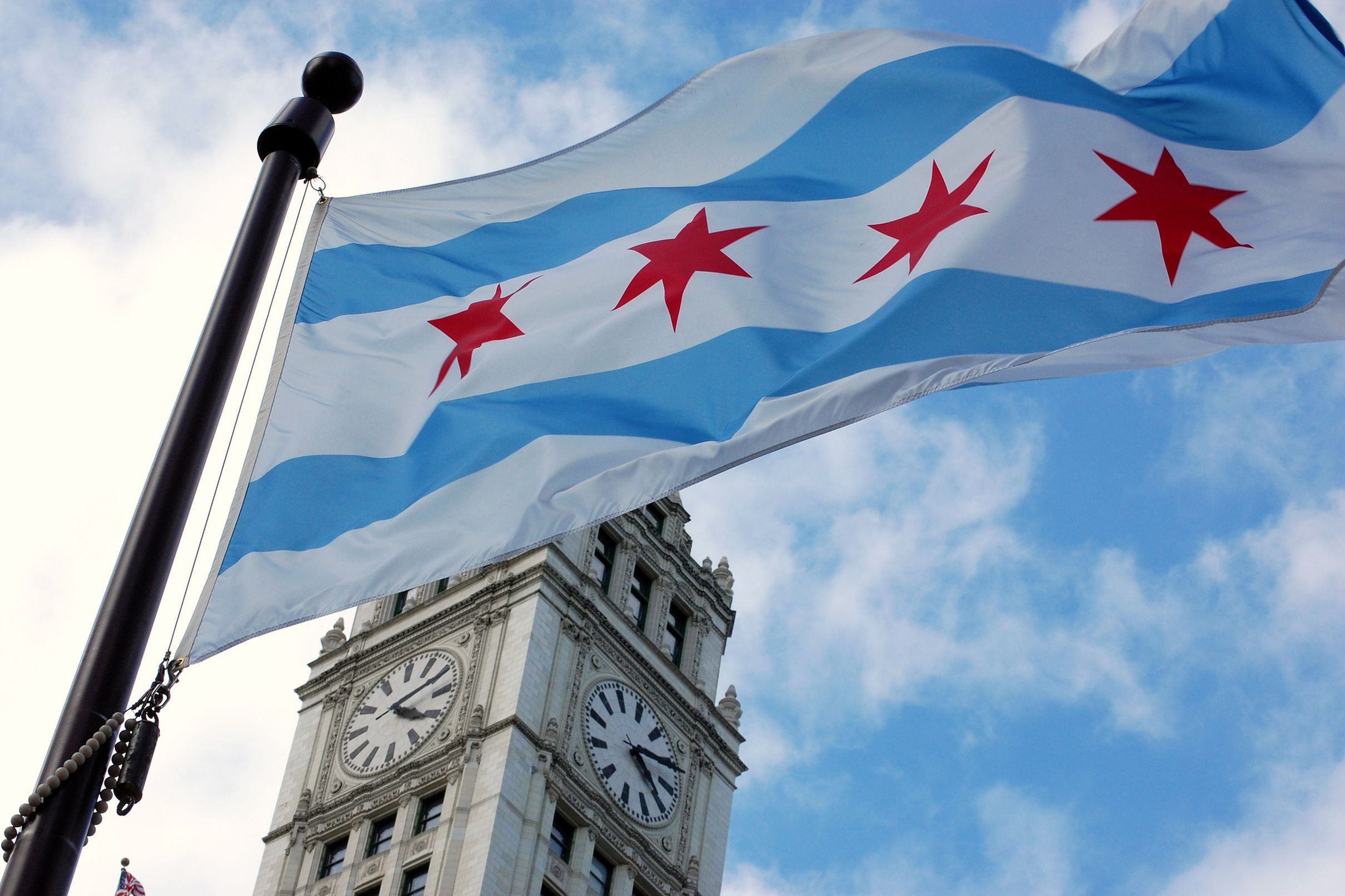 110 years ago today, the Chicago Municipal Flag Commission was created to design a flag for the city. The commission introduced a competition to the public as a way to generate ideas, and more than 1,000 applications were received. In the end, it was Wallace Rice, a writer and poet from the city and the competition’s creator, whose design was chosen. The flag was officially adopted by the state in 1917, yet it was not quite the same Chicago flag that flies today.
110 years ago today, the Chicago Municipal Flag Commission was created to design a flag for the city. The commission introduced a competition to the public as a way to generate ideas, and more than 1,000 applications were received. In the end, it was Wallace Rice, a writer and poet from the city and the competition’s creator, whose design was chosen. The flag was officially adopted by the state in 1917, yet it was not quite the same Chicago flag that flies today.
Wallace Rice was intentional about the symbolism behind the stars and the entire flag. The white horizontal lines across the top, middle and bottom represent the north, west and south sides of the city, respectively. The light blue stripe on the top of the flag represent the North Branch of the Chicago River and Lake Michigan. The bottom stripe represents the Southern Branch of the Chicago River.
The original flag only had the two left-most red starts, instead of the four stars featured on the flag today. The stars were six-pointed, in order to distinguish them from stars regularly seen on national flags, which were five-pointed. The original two red stars represented the Great Chicago Fire of 1871 and the World’s Columbian Exposition of 1893. The third star was added in 1933, representing the Century of Progress Exposition. The fourth star representing Fort Dearborn, was added in 1939. Fort Dearborn was destroyed during the War of 1812, and later reconstructed before eventually being decommissioned in 1837.
Since then, there have been several attempts to add a fifth star to the official flag. Some have attempted to recognize the Special Olympics in Chicago in 1968, or the role Chicago played in the Manhattan Project. In 2017, 100 years since the flag was adopted, April 4 became Chicago Flag Day as a result of the resolution passed by Chicago’s City Council.
Chicago’s red, white and blue flag still flies today and is loved by Chicagoans across the city.



